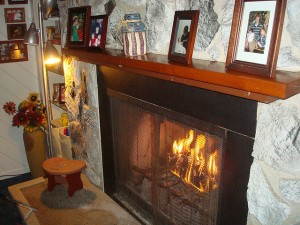 With the aid of non-profit groups known as “villages,” senior citizens around the country are enjoying the perks of assisted living communities at a fraction of the cost – and without ever leaving their homes.
With the aid of non-profit groups known as “villages,” senior citizens around the country are enjoying the perks of assisted living communities at a fraction of the cost – and without ever leaving their homes.
Capitol Hill Village in Washington, D.C. is one of the oldest and strongest of about sixty-five villages nationwide. After four years, it has more than 350 members. Residents pay between $500 and $700 each year for membership, which allows them to receive assistance from a network of volunteers, including a ride to the doctor’s office, grocery shopping, and a so-called concierge service that shares a pre-screened list of vendors for basic services like plumbing or lawn care.
Known as “aging in place,” the desire to stay at home as long as possible, rather than moving into assisted-living communities has always been strong. According to AARP surveys, nearly 90 percent of people over 65 want to stay in their homes as they age. Yet, many find themselves suddenly unable to drive, or perform the duties necessary to maintain a home. The best option for most Americans in this situation is to finally move out of their homes. But, the village movement is gaining momentum. While it’s still currently available to only a small number of Americans – mostly concentrated in the Northeast and Mid-Atlantic regions of the U.S. – the idea could certainly have potential for growth.
Still, many villages are struggling financially. Those in rural regions like Nebraska find that their potential members find the cost – even as low as $480 – prohibitive. And many networks lost members during the recession.
“Some understand it,” founder Nancy Intermill of Lincoln, Nebraska’s Midtown Village told Fox News. “They get it immediately and realize what the benefits are. Others think about it and think, ‘I don’t need that right now,’ or ‘I can’t imagine spending that much.’”
Villages are attempting to curb the costs of membership by collecting donations or applying for grants, but those are typically temporary solutions. In order to thrive and grow the movement, they will have to convince the aging generation of Baby Boomers of the benefits of village membership. Those benefits that, Fox reports, current members see quite clearly.
“After the village became available,” says 80-year-old widower Weaver Shepperson, who is a member of the Capitol Hill Village, “ I stopped thinking about what my other alternatives would be.”
Shepperson has been blind for 50 years and living alone since his wife’s death in 1999. He uses the village’s services several times a month for visits to his doctor.
Perhaps with greater support and awareness of the availability of these communities, more senior citizens in the future will be able to reap the benefits of remaining in the comfort of their own homes as they age.
Source: Fox News
Photo Source: Flickr’s jazzymiles1

 Aging in Place
Aging in Place


 Funeral Favors Offer Visitors a Tangible Memento
Funeral Favors Offer Visitors a Tangible Memento
 “Comeback” by Prince
“Comeback” by Prince
 “Other Side” Documents Woman’s Fight To Die As She Wishes
“Other Side” Documents Woman’s Fight To Die As She Wishes














